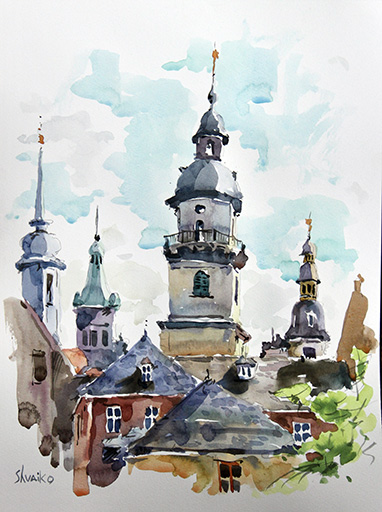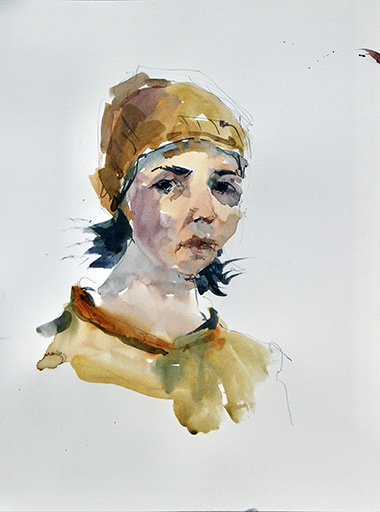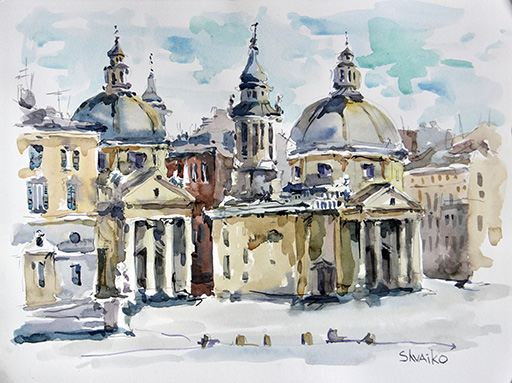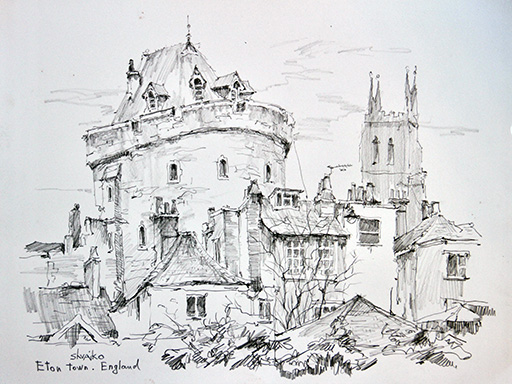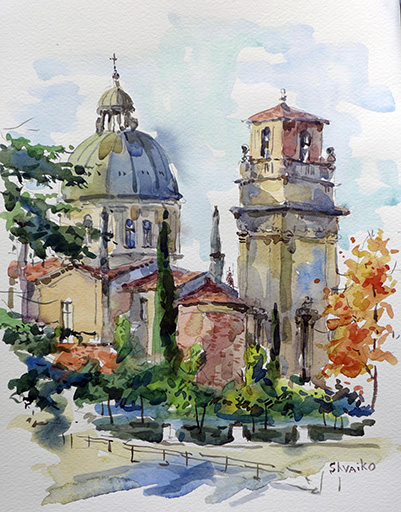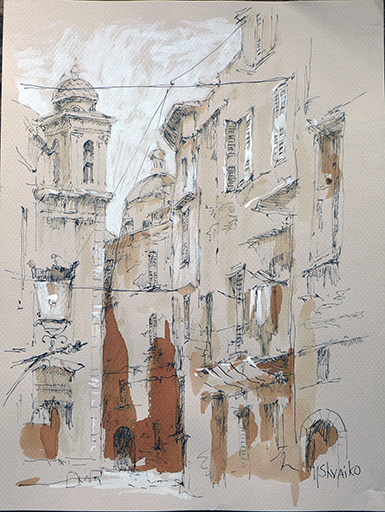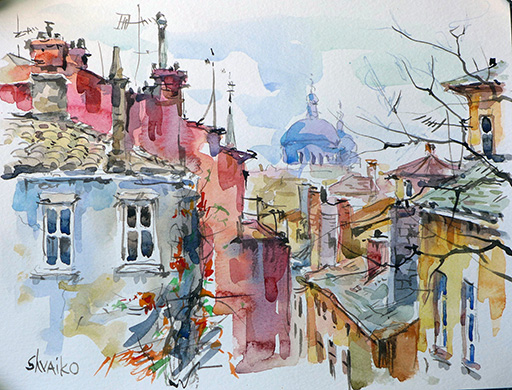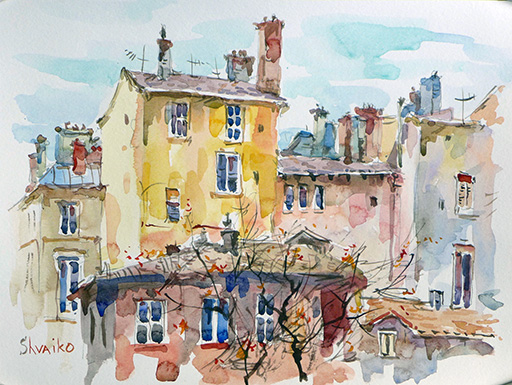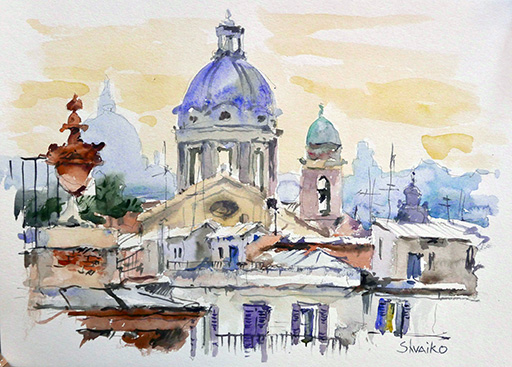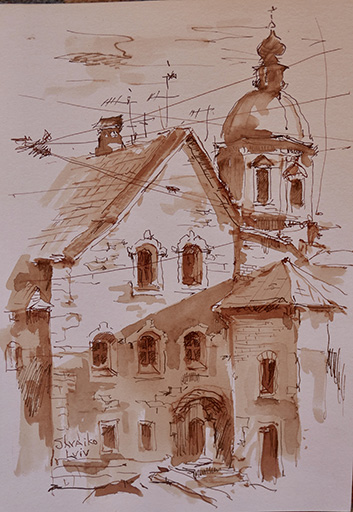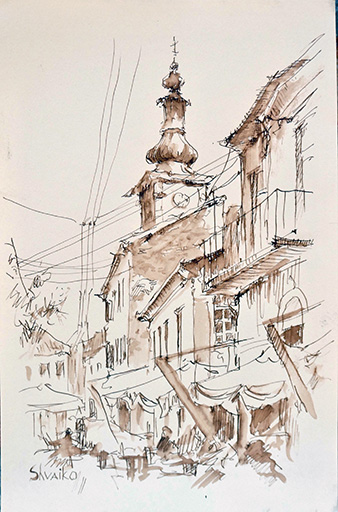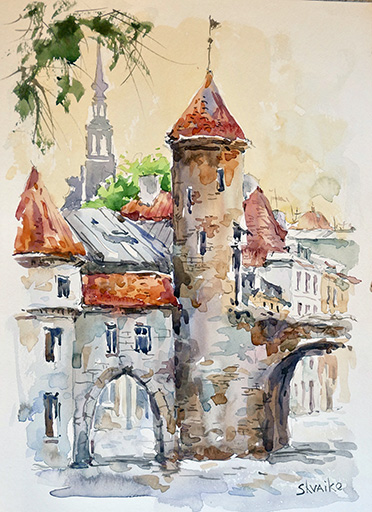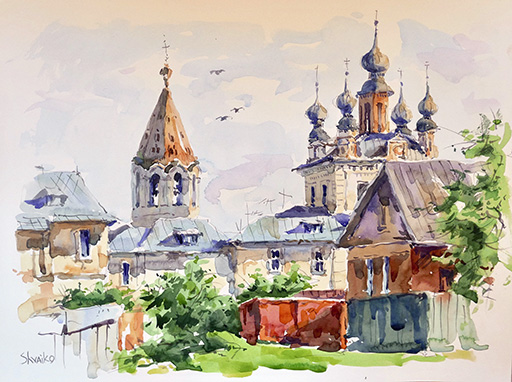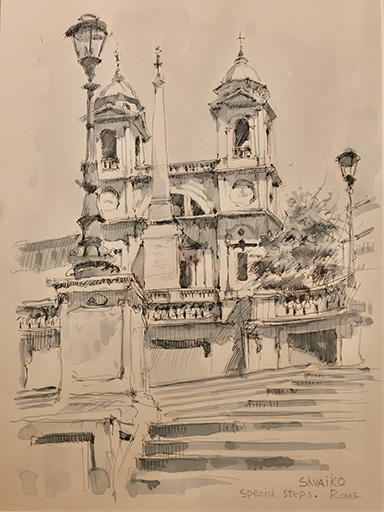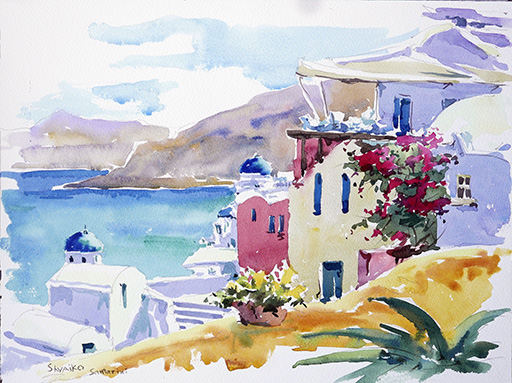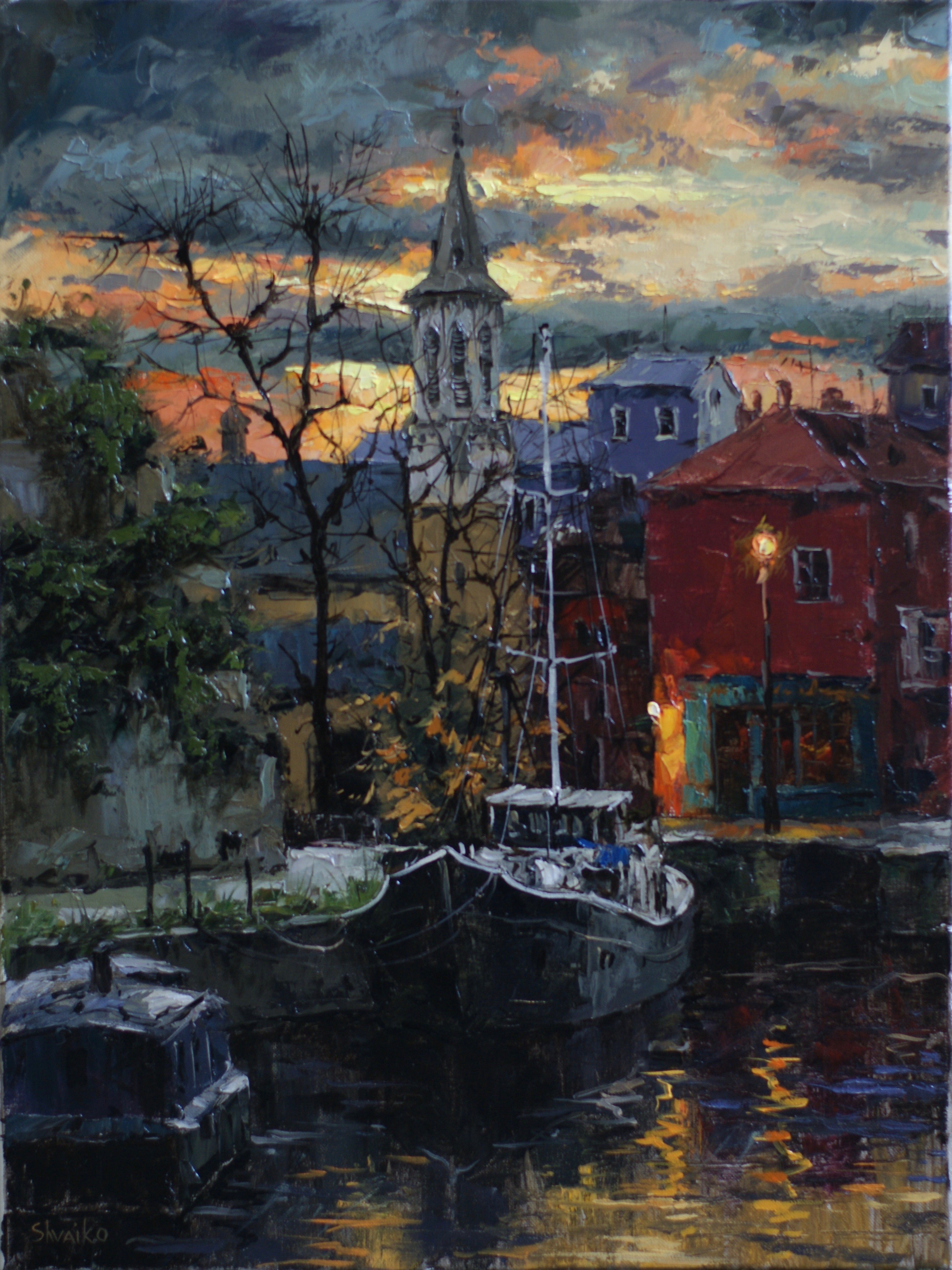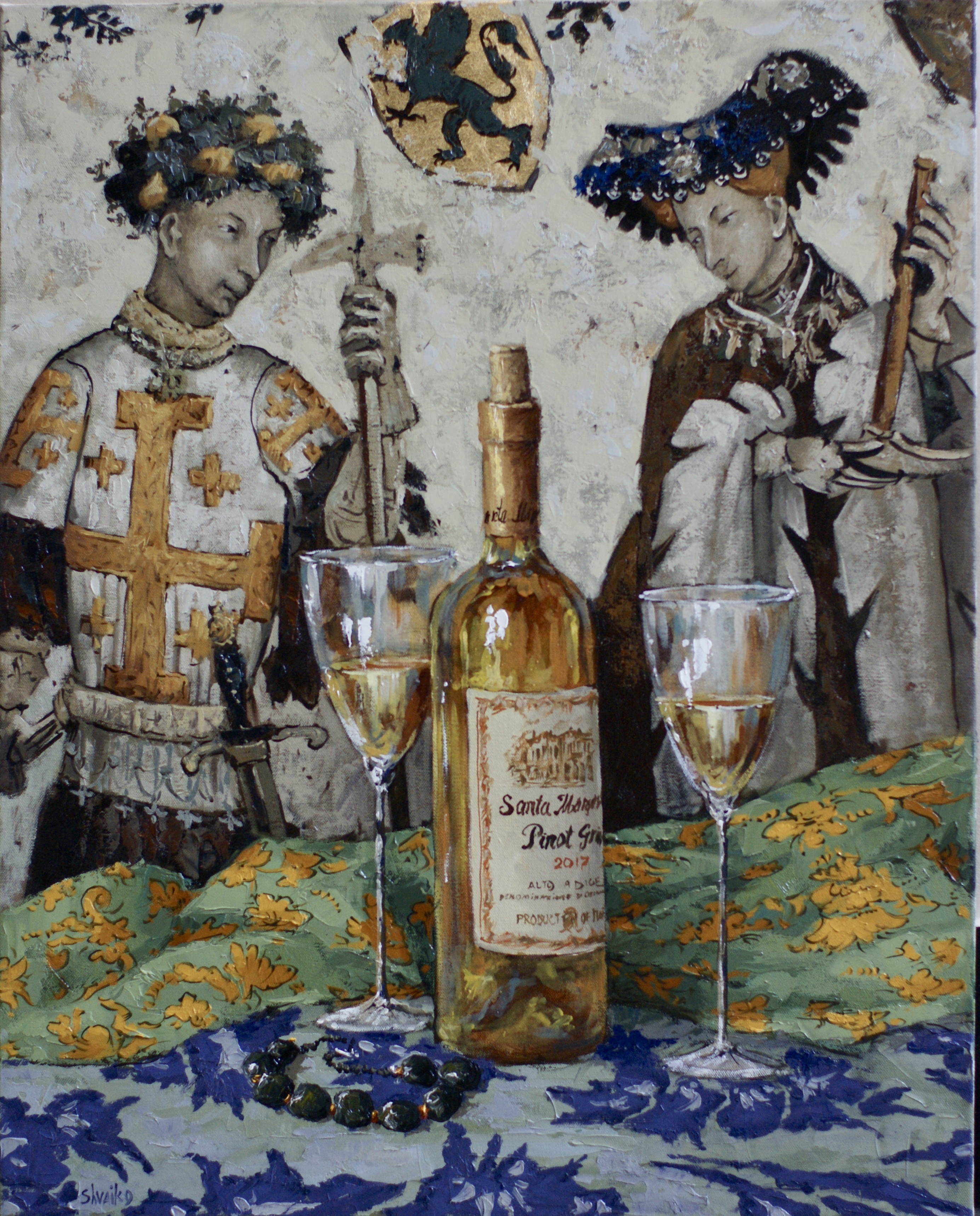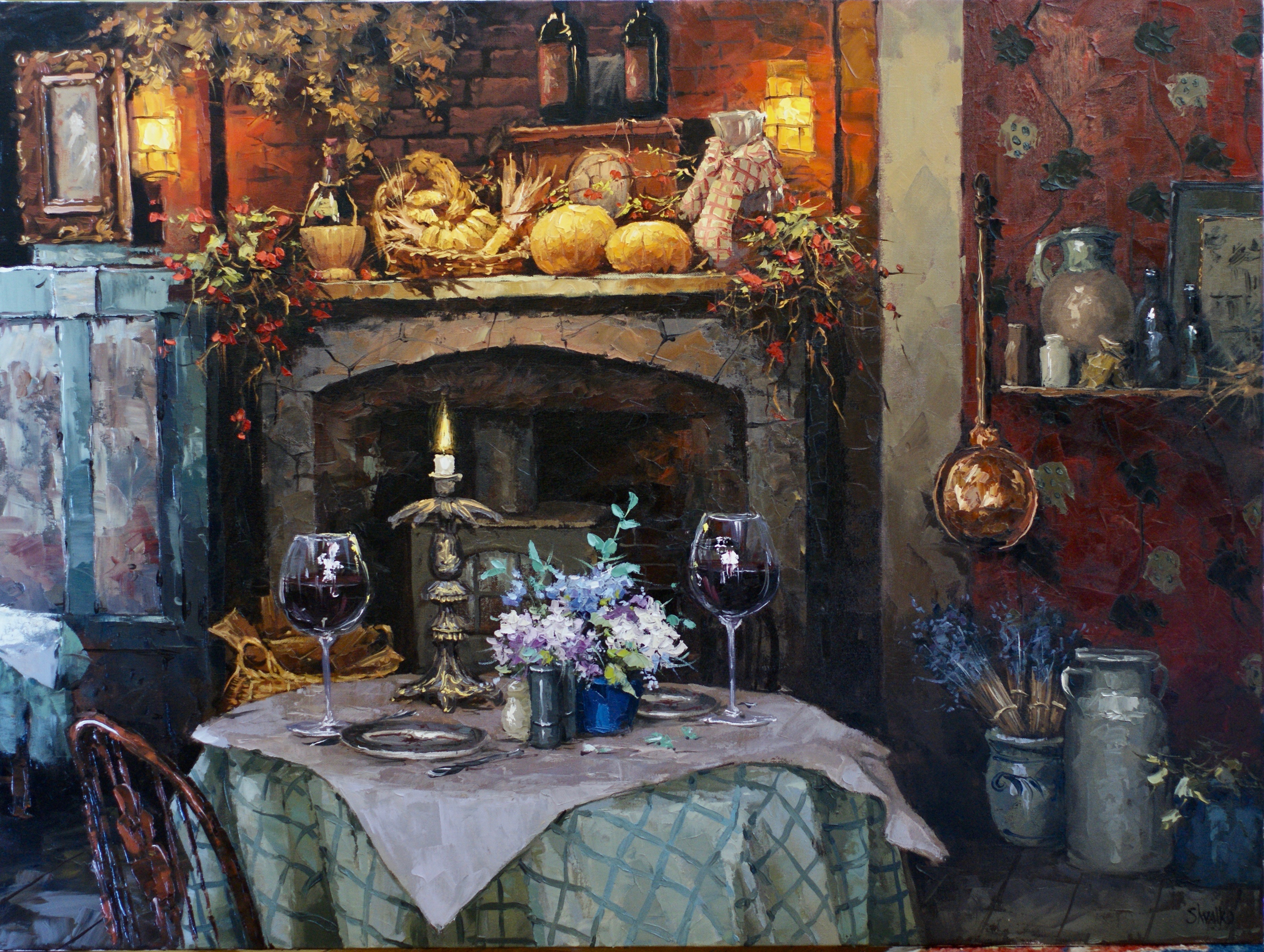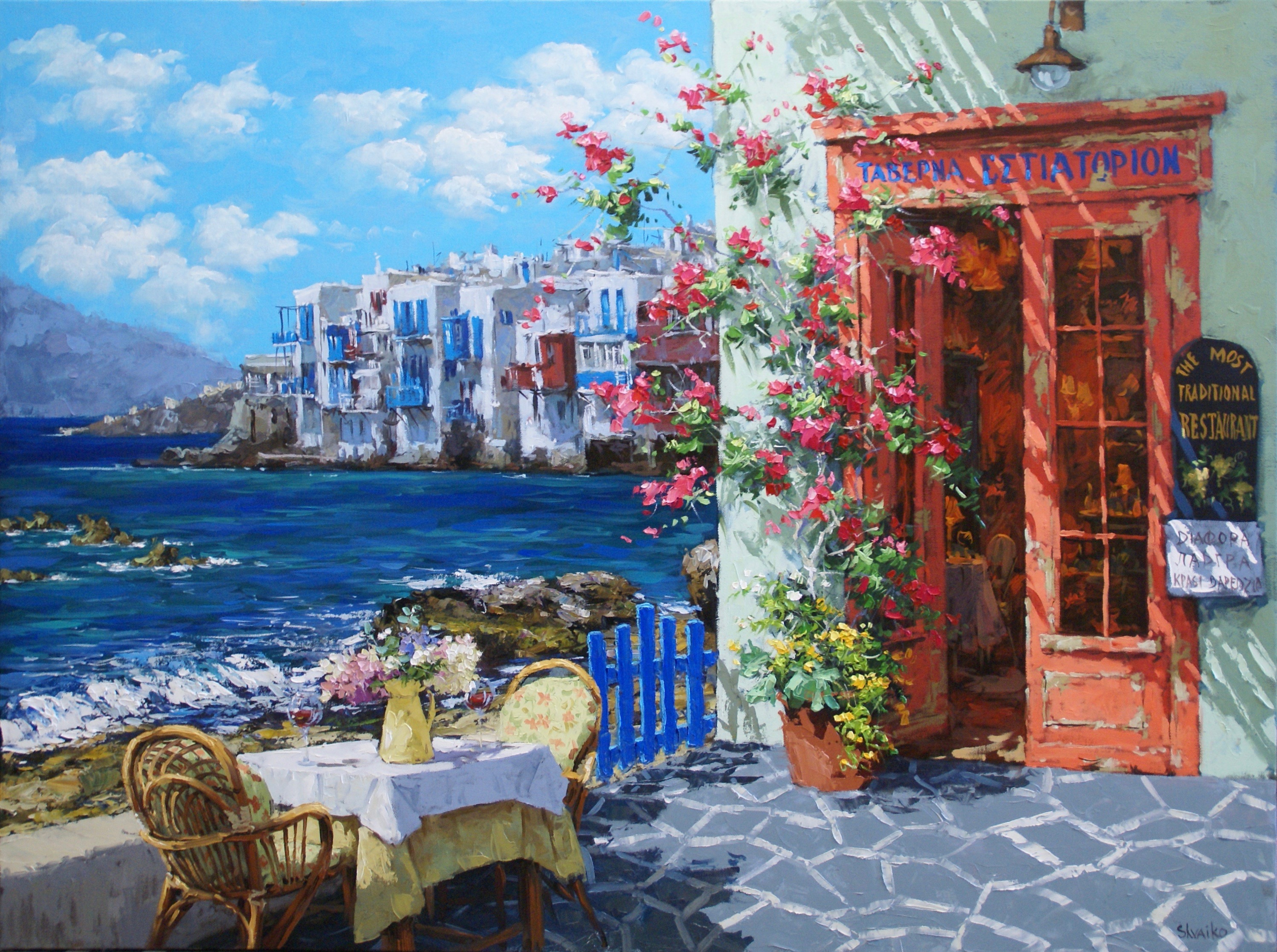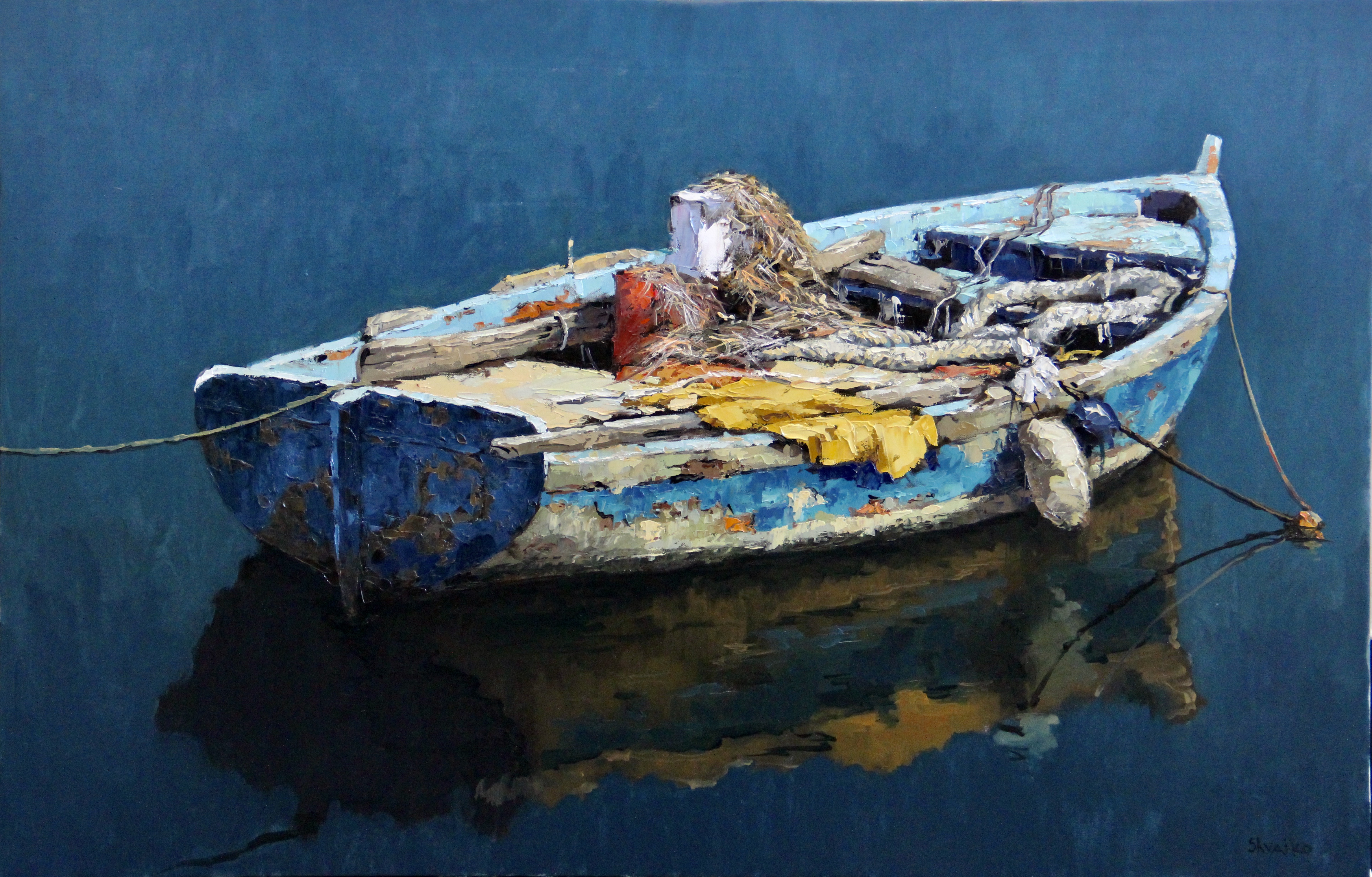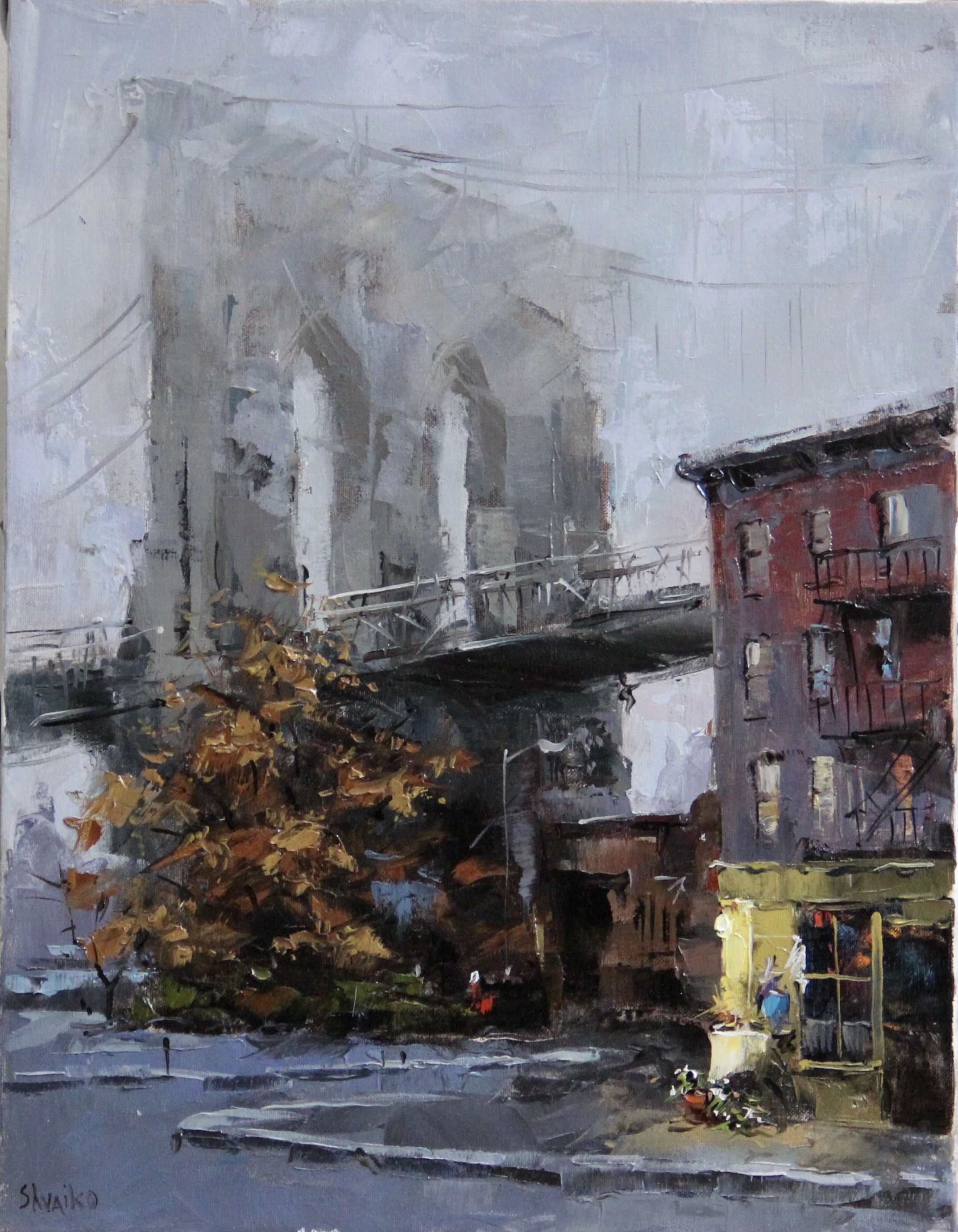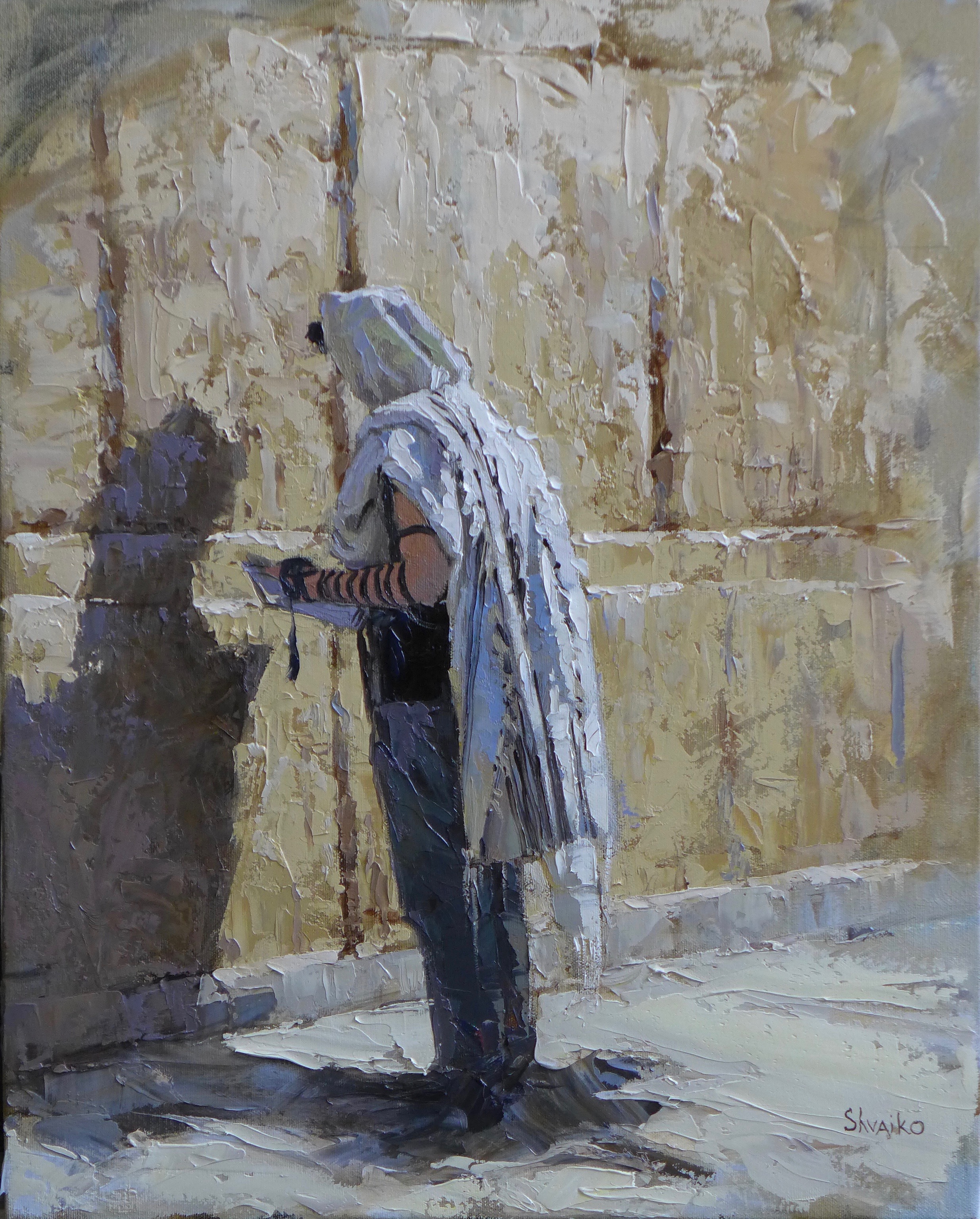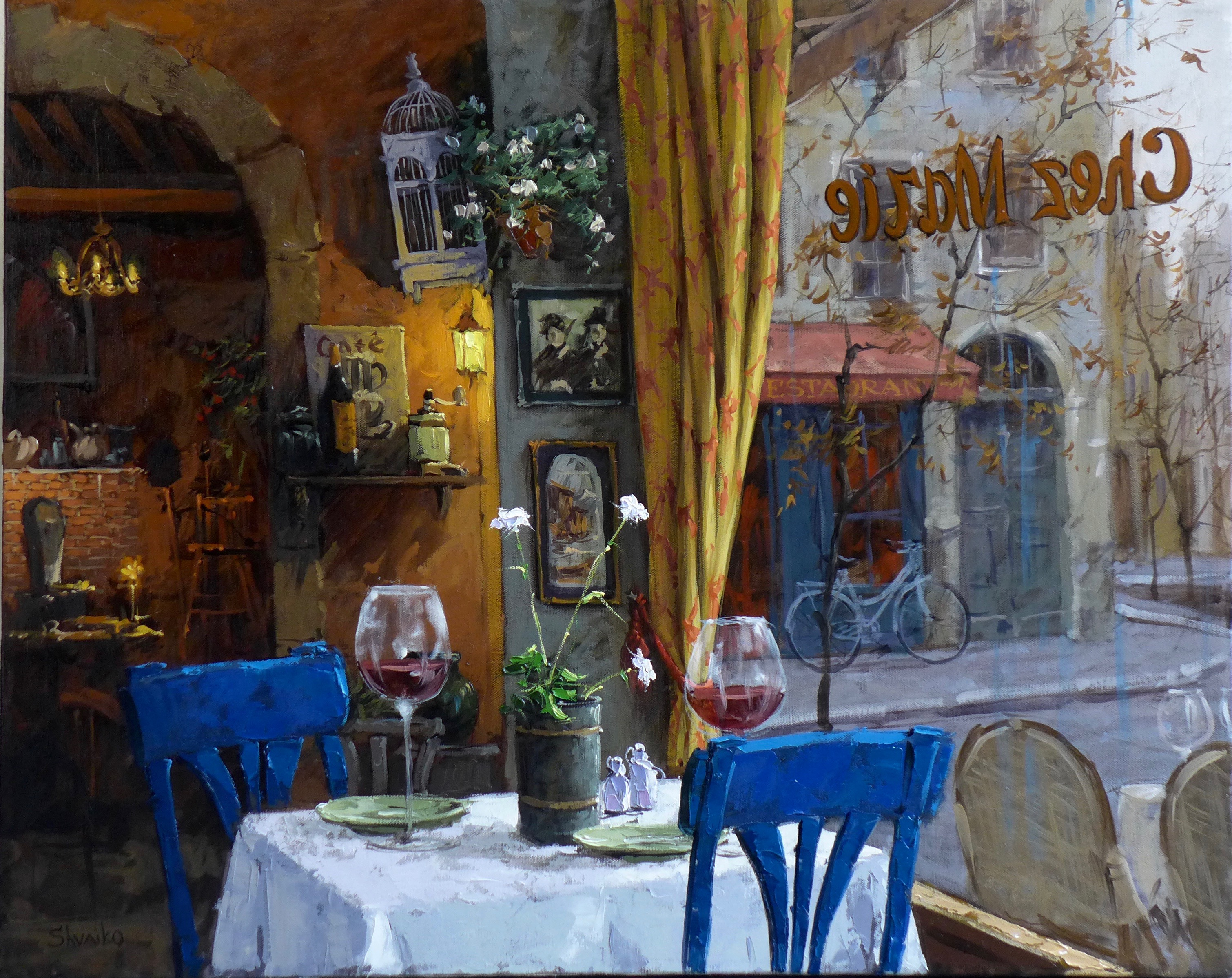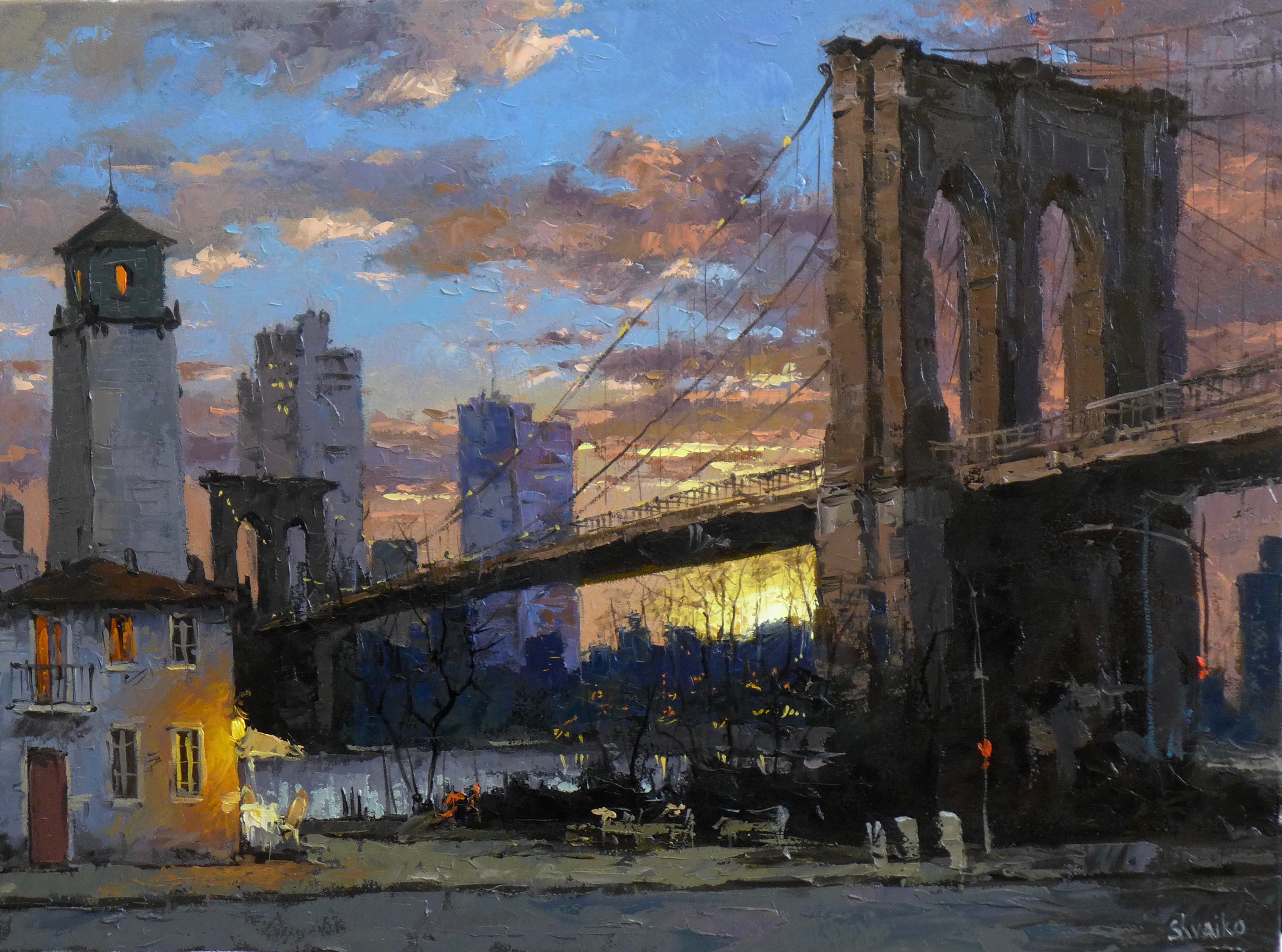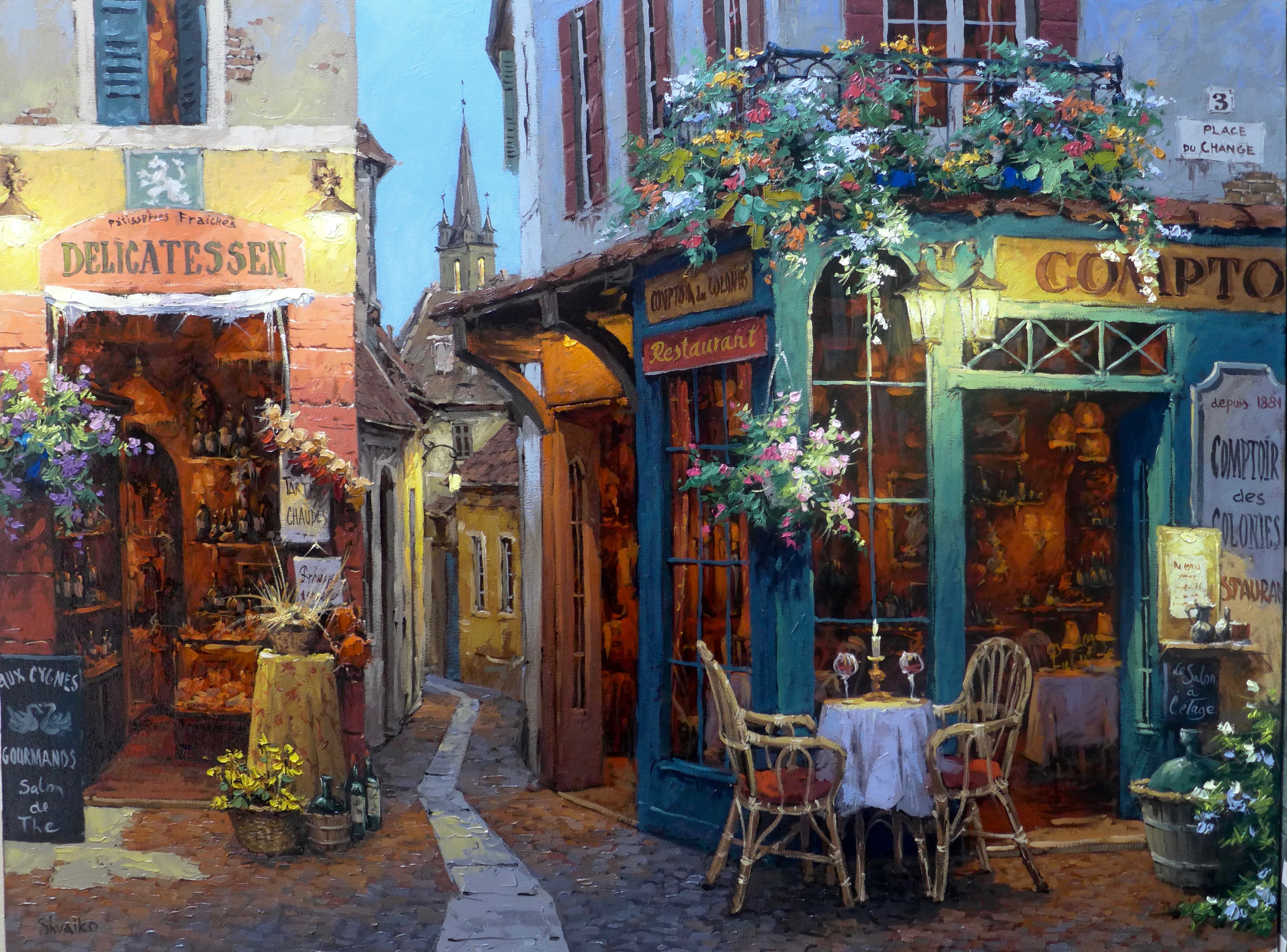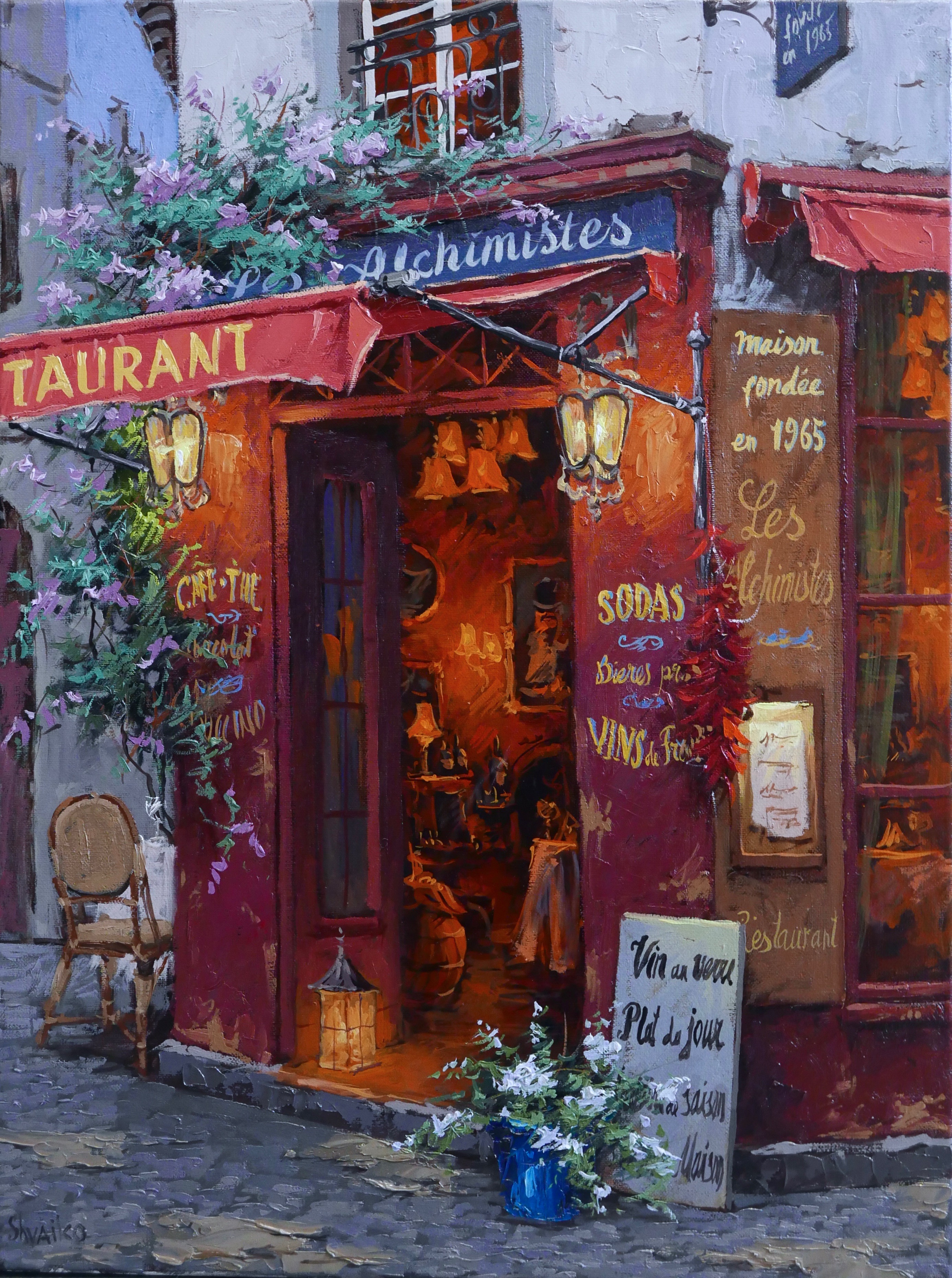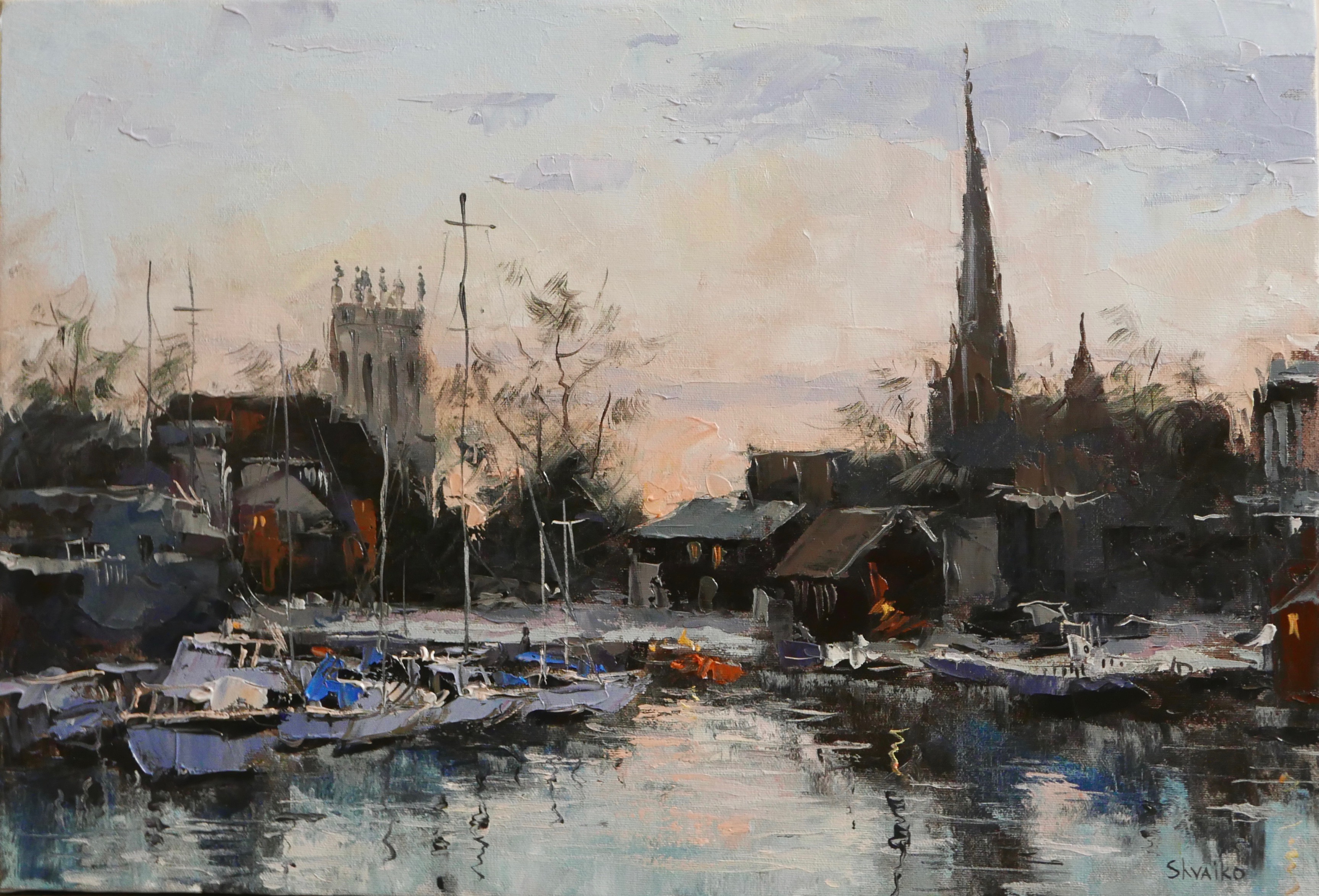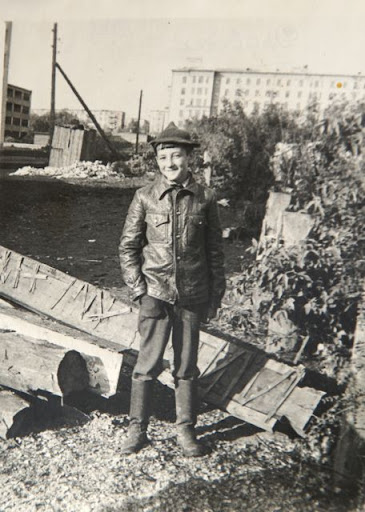Journey to the West
An Abridged Autobiography by Viktor Shvaiko
 I was born on August 23, 1965, to Valentina Anatolievna, an economist, and Yevgeniy Mifodievich, an engineer. I have two sisters; Yelena, born in 1962 and Tatiana, born in 1973.
I was born on August 23, 1965, to Valentina Anatolievna, an economist, and Yevgeniy Mifodievich, an engineer. I have two sisters; Yelena, born in 1962 and Tatiana, born in 1973.
My childhood was very colorful, though not all sugar-and-honey. By the age of seven, I had undergone five foot surgeries, and I had to spend almost a year in hospitals. The rehabilitation treatment was long and arduous.
At the age of twelve, I entered the Junior Art School. In Russia, after eighth grade, you can either continue education at high school or learn a trade at the vocational schools. I did not have a single moment of hesitation; I saw my future at the Specialized School of Art. When the list of those accepted to the school was announced after the exams, I was sitting at the last desk in back of the room. I remember very clearly thinking, "If I am not on the list, my life is over." You cannot imagine my happiness when my name was announced.
 During my third year of study, my parents moved from Barnaul to Mukachevo. Since I wanted to finish my courses at the same school, I stayed in Barnaul alone. I slept at night at the school. I hid all my belongings under a podium. By the time I graduated, I had come to see myself as a painter.
During my third year of study, my parents moved from Barnaul to Mukachevo. Since I wanted to finish my courses at the same school, I stayed in Barnaul alone. I slept at night at the school. I hid all my belongings under a podium. By the time I graduated, I had come to see myself as a painter.
Usually, if a graduate did not go on to art college, he worked in a field other than art. As for me, I was drafted into the army for two years service as an artist. I did lettering and illustrations for various posters and signs. I also made several copies of famous paintings as presents for generals. I look back now on the time I spent in the army with little pleasure. However, there were three important things which the army instilled in me: Never be late; Never lie; Always keep your word.
 In June of 1987, after demobilization, I moved to Mukachevo to rejoin my parents. At this point in my life, I did not know what to do with myself. I needed an adventure, something to inspire me. I remembered one of my former fellow students telling me that he had managed to cross the U.S.S.R. from Vladivostok to Moscow (about 7000km) without money by hopping freight trains. I did not believe him when he told me, but I thought I would see for myself whether it was possible.
In June of 1987, after demobilization, I moved to Mukachevo to rejoin my parents. At this point in my life, I did not know what to do with myself. I needed an adventure, something to inspire me. I remembered one of my former fellow students telling me that he had managed to cross the U.S.S.R. from Vladivostok to Moscow (about 7000km) without money by hopping freight trains. I did not believe him when he told me, but I thought I would see for myself whether it was possible.
I took a small rucksack, two T-shirts, an umbrella, a vest-jacket, three rubles (about fifty cents), a few cans of food and half a loaf of bread. I planned to reach Irkutsk (Siberia) and explore the Asian route on my way back. The trip turned out to be extremely arduous.
Sometimes the train engineers agreed to pick me up, but the distances I covered in this way were short. Sometimes I walked. I washed my clothes in the rivers and dried them right on the banks. I ran out of bread, then out of canned food. I slept right in the street, covering myself with the vest-jacket. Over the next week I became really weak.
 In this desperate state, I reached the station of Kungur, not far from Sverdlovsk, the Ural, where my uncle lived. And there it happened - a chance which made me believe in God. In Kungur I boarded a bus, planning to go as far as six stops. Suddenly, I saw something lying on the seat next to me. It was 100 rubles! This stunned and amazed me.
In this desperate state, I reached the station of Kungur, not far from Sverdlovsk, the Ural, where my uncle lived. And there it happened - a chance which made me believe in God. In Kungur I boarded a bus, planning to go as far as six stops. Suddenly, I saw something lying on the seat next to me. It was 100 rubles! This stunned and amazed me.
In my darkest hour, when I was about to give up and turn back, God gave me the chance to continue my trip. I believed that the money was not lost - it had to have been left there for me to see it. I couldn't know then that the fortuitous discovery of money, along with the physical hardships of my travels, foreshadowed events that would occur later, in a more important journey.
After a day of resting at my uncle's place, I headed out again. Traveling was becoming easier for me; I had learned a few tricks. Finally, I made it to my native city of Barnaul. After all the adventures I had experienced during this journey, there was no need to go any further, I felt satisfied that I accomplished my goal.
I took a short rest after coming home and took a job with a construction company as a graphic designer. My job was boring. Occasionally after work, I would try to copy some paintings. With no money saved, I saw no escape from the monotony of this "everydayness." Month after month, the year passed in this dull walk.
In the fall of 1988, my father arranged for me to work in Kiev. At the same time my sister, with her friend Valentina, came to Kiev to take some courses. We met rather often, took long walks, and talked a lot. This is how I got acquainted with my future wife. After returning to Mukachevo, I continued seeing Valentina, and we married in the spring of 1989. We went to Yugoslavia together and tried to earn some money but still it was too little. It was during this trip that the idea first came to my mind to go to Italy.
For me, Italy has always been the symbol of art. I wanted to see the historical monuments with my own eyes. However it was almost impossible to do it legally at that time in the U.S.S.R. In the fall of 1989 our daughter Elvira was born.
Now a few words about how I became an artist. One day I presented a landscape to my wife. She knew that I was working as a designer but had no idea that I could paint a "real picture." She was very excited, since it was one of her dreams in life to own a work of art. Also, she was amazed to see me as an artist. From that point on, she told me over and over that I should be an artist. Finally I believed it myself. I left my job, joined the Artist's Union and started to exhibit in the galleries. And the paintings were sold! The money I earned in two or three months was much more than a year's salary at my previous job. Thus Valentina helped me to become an artist.
Soon I was preparing for my first one-person exhibition. The first solo exhibition was a success. It was then that I started to save money for the trip to Yugoslavia, with the idea of continuing on to Italy. To enter Yugoslavia, you had to have $200, and that was a lot of money for us. After the first exhibition, I started preparing for the next one. However, by that time the attitude towards me in the Artist's Union had deteriorated. They considered me an upstart. Some were openly envious and, as a result, the opening of the exhibition was cancelled. But I had supporters as well as detractors, and with their help I tried to fight the decision. I received permission to display the paintings for a ten-day period. The attendance was excellent and all the paintings were sold.
Thus I got $200 for the trip to Yugoslavia. I hadn't the slightest idea how I would get from there to Italy. I was preparing myself for the years of hardship.
Before the trip, I primed fifteen canvases and put then in a big stilt-case with the rest of my equipment. The luggage was far from light. My plan was to make sketches in Yugoslavia, sell them there, and use the money for moving west. So, I was ready for the most important journey in my life. It was illegal to have any money leaving the USSR (even though they knew you had to have money to get into the other countries), so Valentina put the $200 in a can with oil, first covering it with a plastic bag. It was early June, 1991.
The trip through Hungary and Yugoslavia was successful. I decided to stay in Rieka, on the Rieka Bay, close to the border of Italy. I lived in the mountains in a hut made from branches and canvas. Trying to conserve money, I ate almost nothing. Usually I bought a muffin and a can of food, which I would make last for two days. While the whole day was drawing and walking, the evening I had to relax. I became a regular at a beautiful cafe overlooking the bay. I spent the quiet evening writing letters to my wife - hundreds of them. I told her all about my day, my feelings and my impressions. I spent two to four hours every evening in the manner, which I greatly enjoyed. From the moment I awoke, I looked forward to these hours to talk to her. I think there letters played an important role for me, since in them I formulated my plans and goals and promised to do my best for the happiness of my wife and little daughter.
After two weeks, I had made fifteen sketches and went to the city to sell them. First I tried galleries, but they did not even want to talk to me. The situation in the country was very tense. The war was going to break and purchasing art was the last thing on people's minds. I tried to sell them right on the street. People loved my pictures, but the money they offered could not even cover the expenses for framing (I bought frames earlier). I was on the verge. What could I do? I was hungry, penniless, and alone in a foreign country. I was so depressed that I thought, " Forget it! You'd better go home!" But I knew that if I left then, I would loose my chance forever. I vowed to continue. No way back!
It broke my heart to do so, but I buried the case with my pictures in the mountains (it may be there still). I bought a bus ticket to the town closet to the border. Over the roads, the army had put up barricades and soldiers were marching by with guns on their shoulders. I knew that the soldiers at the borderline shot first and asked questions about documents later. Preparing for this most dangerous of my walks, the one over the border, I ate a lot, for I had to walk about fifteen kilometers (10 miles). The map I had was rather poor, so all my directions left much to be desired. The rucksack's weight was about forty kilograms (85 pounds) and very clumsy. But I had to go. I went through the ravines and bushes, climbing and falling, up in the mountains and far from the paths. The rucksack was killing me. I walked and walked, and, after a few hours, I approached the guard's path. There was a field on one side of me, and a cliff on the other. A smaller path curved between the trees. I didn't know which one to choose. I took the smaller one. The Italian flags were drawn on the one side, Yugoslavian on the other. I was so tired, with feet swollen and a sharp pain in my back, that I was walking on automatic pilot, without any thinking, and just praying to my guardian angel for survival.
A guard appeared ahead. I crawled into a ditch about ten steps away from the path. I froze. I had no feeling of time. Then I got up and went ahead not looking around. Thus I came to the customs point. Here was the crucial crossroads. There were only two choices: either to jump from the slope or turn back. I made up my mind to jump. First I pushed the rucksack over the slope where it was not as steep and followed it rolling down. I was lucky not to break any bones. I heard someone shouting at the top of the slope. I thought they would start shooting and got up with my hands up. But nothing happened. I realized that they had not seen me, and I seized my belongings and rushed further down through the woods.
At last I saw a village. According to my calculations it should have been Italian, but I could not afford a mistake. I washed myself in the brook and changed clothes - for I was all dirty and wet from sweat and looked like the devil. When I reached the village and heard Italian being spoken, I became crazy from happiness - I did it. I was in Italy!
It took my two days to get to Rome through Venice and Bologna. Italy amazed me. I was exhausted physically, but I felt inspired. Never had I even dreamed of seeing all this beauty. I found myself in Rome with $5 in my pocket.
I made an attempt to inquire at the Russian Consulate about getting a job or some assistance, but the treated me as a traitor and told me to go back to the Ukraine. Weak from hunger, I was almost ready to follow their advice but at the very last moment I turned the other way. I felt that I had to follow this path to the very end, in spite of all difficulties.
Shortly afterwards, I met some Czechs and they helped me to meet some other Russian emigres. At that time I discovered the Caritas Fund, and they sent me to a free canteen. Life became much easier. The Russians I met were renting a house on the coast. I pitched in and stayed with them. With no money at all, at first I lived at my new friends' expense. When they learned that I was a painter, they advised me to start drawing, but I had neither paints nor canvas. And at this moment again the almighty God helped me. Walking along the street of Rome I found $60! It was this money that I used to but watercolors, some paper and a brush or two.
Every morning, right at seven o'clock, I went to Rome and spent the whole day drawing. I moved from one bridge to another, selling the pictures right on the spot. I earned $10 to $40 daily.
I adored the windows and doors of Rome, and they became my favorite subject from painting. I don't know why, but windows and doors seemed the symbol of Rome for me - its spirit. I saw in them beauty, pleasure and diversity.
On Sundays, I managed to sell all the paintings in three to four hours at Porto Porteze, earning $300 to $400. This was a lot of money for me, and more importantly, I had started to develop regular customers. I got several commissions and worked with both watercolors and oil. By that time, I had been in Rome for three-and-a-half months and had many friends and acquaintances there.
Three more months passed, and I came to the understanding that, regarding my legal status, I was at a dead-end. To obtain permanent residence in Italy takes ten to fifteen years. At that time, the Rastropovich Institute, at which I was now the Artist in Residence, offered to send me to Russia on a business trip as their representative, with the promise that a contract for a full-time position would follow immediately. I took this trip. The promised contract never materialized. Instead I received the usual invitation from them, and not immediately, but after four months had passed. It took a lot of time to prepare papers for the new trip to Italy. But I was back home with my wife and baby daughter whom I had missed so much during my seven-month absence. I was not in a hurry to leave them again.
Meanwhile, much had changed in my country since I had sneaked across the border from Yugoslavia to Italy. The old U.S.S.R. was dissolving, and travel to foreign countries, especially the West, had become much easier. It was at that point that I learned from friends that there was a way to buy an invitation to the United States. I bought two invitations - one for my wide and one for myself. Thus for the first time that idea came to my mind to try my luck in America. After an interview at the American Embassy in Moscow, I got the visa, but my wife was refused it.
As first I did not take the idea of going to the United States seriously, but after the visa was issued and the trip became possible, the choice - Italy or America - became hard to make. I had been to Italy before, and it would have been much easier to choose Italy. I knew that I would spend my life painting in whatever country I would reside. In the end my wish was to challenge myself and my talent, and that is why I chose America.
At the time, I really knew nothing about this far-away country. The only thing I believed was that it is an honest country; one has to work hard there to achieve something, and that relationships between people and different from those in Europe - more individualistic. But no details. Even the location of New York was a mystery to me, and when I saw it on the map for the first time, I was very much surprised to find that New York is on the islands of the coast.
First I returned to Rome to earn some money for the trip to the U.S.A. I spent a month earning the money for the air fare, and $200 extra. It was with this sum, a small suitcase and a great desire to realize myself as a painter that I came to America.
The day of my arrival was December 10, 1992. It was a typical cold and wintery December day in New York. I couldn't find the subway station, so for $25 I took a car service to Brighton, the Russian area of Brooklyn. I had just $175. After studying the ads posted on street corners, I went to see a studio for $150 and found five people already living in a dirty and crowded apartment. But I had no other choice.
During the first month I took any job I could get to earn a living. I started finding time to paint watercolors in the evenings. Then my friend Valery Gulovich came to New York. Valery's English was perfect and together we decided to go around to galleries and offer my paintings. On Sundays we tried to sell some of the paintings on West Broadway.
So, there we were in Soho. I must admit that we looked rather strange and had little chance for success. Instead of a portfolio, I carried a bunch of paintings with me (three of them were cafe scenes) and we wore second-hand clothes sold by the pound. We looked like partisans of the World War.
We only had one chance with each gallery. Valery developed a strategy of presenting our pictures and introduced himself as my agent. And here came our luck! In one of the galleries, someone liked the pictures and he referred us to another gallery where they expressed interest in my work and asked us to leave the paintings. The next day we were paid $100 for one piece, and I was asked to make more. The moment I brought the paintings next time, they were sold. It was February of 1993.
I began bringing my paintings every week, and the gallery seemed to sell them as fast as I could paint them. I cannot express the joy I felt when I realized that. After so much struggle, my dream of living as an artist was materializing. A year went by this way, and with each passing week I became more confident in my success. Finally, after a separation of fifteen months, I was able to bring my wife Valentina and daughter Elvira to America. My Journey to the West was now complete.
Viktor and Valentina had a second child, Andrew, on May 15, 1997. In 2004, Viktor Shvaiko became an American citizen.

